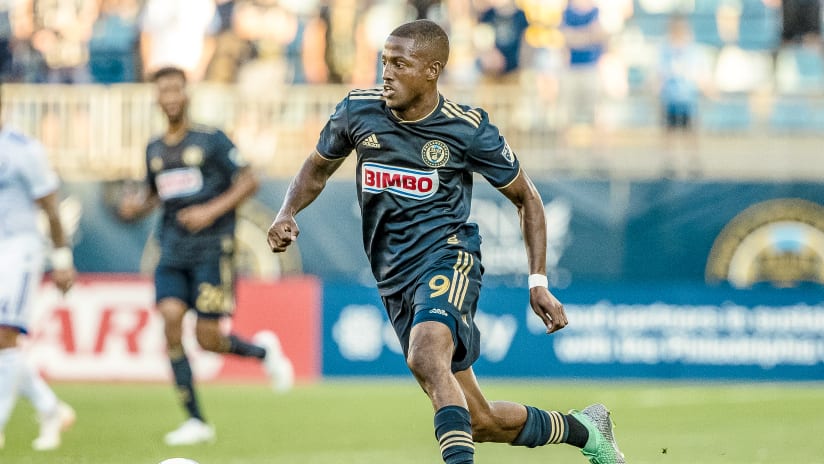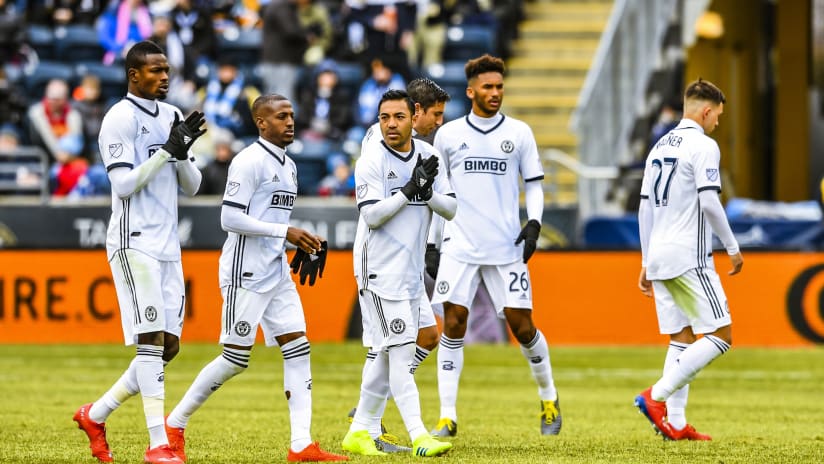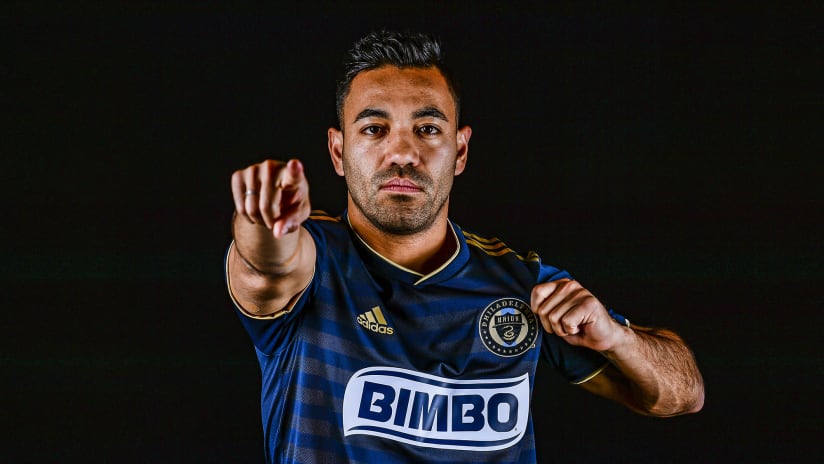Fafa Picault didn't score until his 10th appearance of the season for Philadelphia. Ten, coincidentally, is how many goals when that season ended 24 games later. The winger, who is known for -- and, perhaps, underrated at times because of -- his speed, has now provided double digit goal returns in each of his first two MLS seasons. In a league that increasingly values final product from the wings, Picault had more goals than any other American wide attacker.
The goal scoring record is impressive, and even on it's own it would be plenty on many teams. But the Union model of play requires active, defensively-oriented wide men, and Picault fulfilled his duties with boundless energy. The pressure that led to the winner in Seattle is the memorable moment, but the consistency of the pressure stands out. Picault wanted to win; to win, he had to score; to do that, he needed the ball. That calculation was at the heart of every play made by the man that danced like everyone was watching.
Although Fafa Picault's speed remains his most breathtaking attribute, it can define him in a way that minimizes the intelligence with which he uses it. Picault's initial aim during transitions is not to get in behind his defender, but to create enough space to attack on the dribble. When the Union break, the winger isn't looking to immediately get in behind. Instead, he often pulls out wide to create a runway between himself and his defender. When the ball arrives, Picault immediately attacks, looking to freeze his defender or catch him off-balance.
Why attack this way? Why not just run in behind?
By pulling wide to receive the ball, Picault simplifies the initial pass out of the back. Additionally, he gains control of the defender, forcing him to either meet Picault in space or concede a lot of territory retreating. If the defense challenged, Picault looked to put the ball into the space behind and turn on the afterburners. If they backed off, he carried the ball deep and allowed Haris Medunjanin to stride forward and begin orchestrating an offensive set. With a rookie and a right-footed left back behind him, Picault would look for ways to use his speed that didnt require perfect long passes. He looked to play to his teammates' strengths, and away from their weaknesses. He wasn't simply using his speed, he was finding intelligent ways to use it.
Next season, the Union will lean on Picault's finishing, and they will likely seek to nurture and refine his defensive work. Ernst Tanner's emphasis on compactness and dynamism fits Picault's approach, so once he adjusts to the new system he could thrive.
Fafa Picault received his first US Soccer call-up in two years in 2018, and it was well-deserved. If the next head coach of the US team needs energy, speed, and goals off the wing, he can look to Philadelphia to find them in one package. After a second season of improvement in the City of Brotherly Love, Picault is showing steady growth. Any observer, though, will tell you that the winger is still far from his ceiling. Hard work will get him closer in 2019.
For more from our 2018 Philadelphia Union Season in Review series, click here.
Player
Season in Review: Picault produces once again

Tickets
Tickets

2025 Single Game Tickets On Sale Now
The 2025 schedule has been released and now is the perfect time to lock in the best seats for all the key matchups at Subaru Park!
Stay in the Know
Stay in the Know

UNION NEWSLETTER
The Boys in Blue, delivered to your inbox. Tickets, deals, giveaways, and more.
Latest News
Latest News
-
Recap | Union fall to Inter Miami CF
-
Photos of the Match | #MIAvPHI
-
Press Conference | Bradley Carnell after #MIAvPHI
-
Box Score | Inter Miami CF 2, Philadelphia Union 1
-
Quinn Sullivan becomes first homegrown in club history to reach century mark
-
XI Notes presented by BIMBO | Union at Inter Miami CF
-
Philadelphia Union Add Frankie Westfield To Roster Ahead Of Match Against Inter Miami CF










